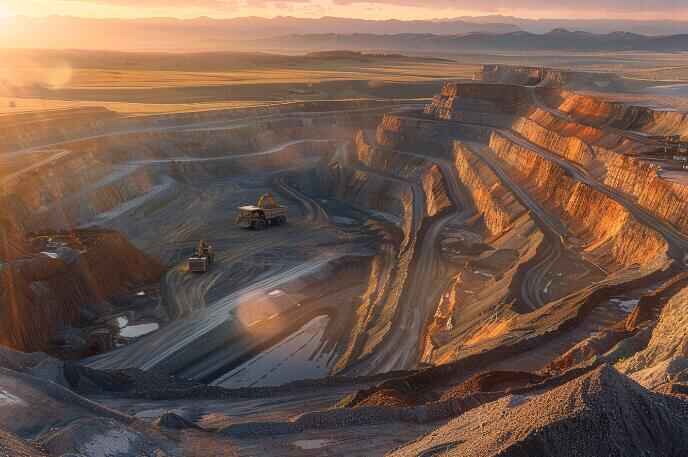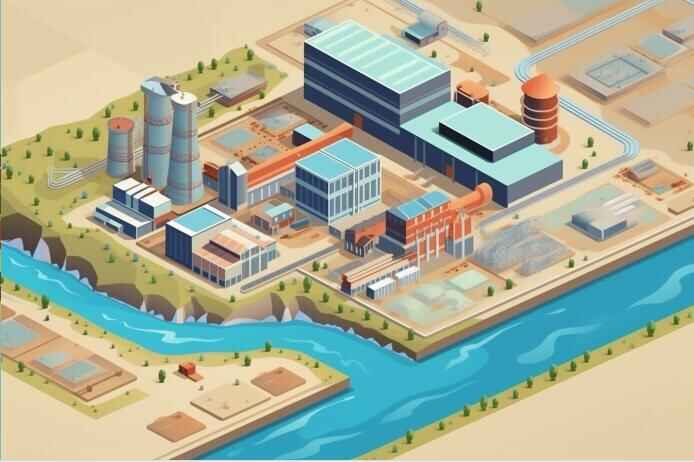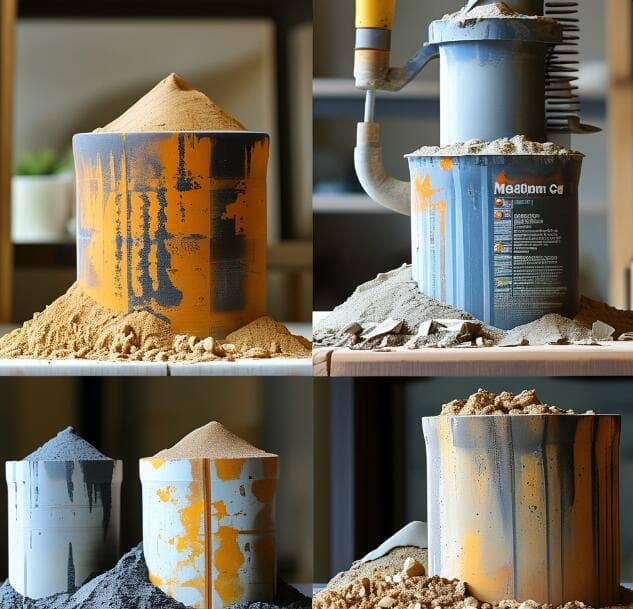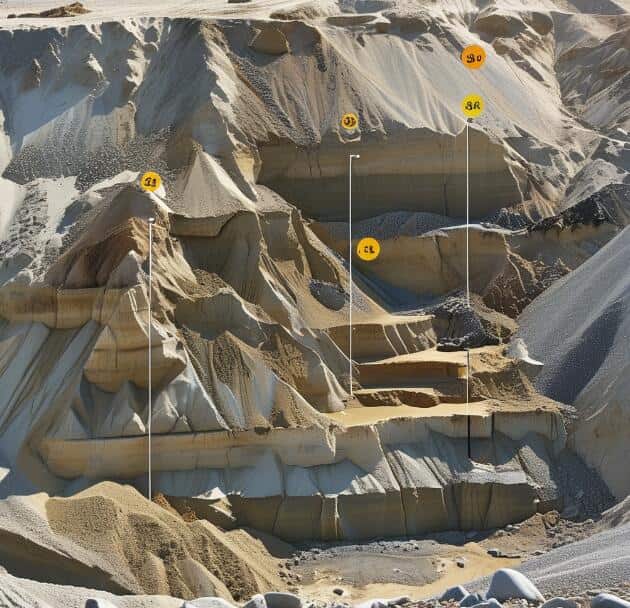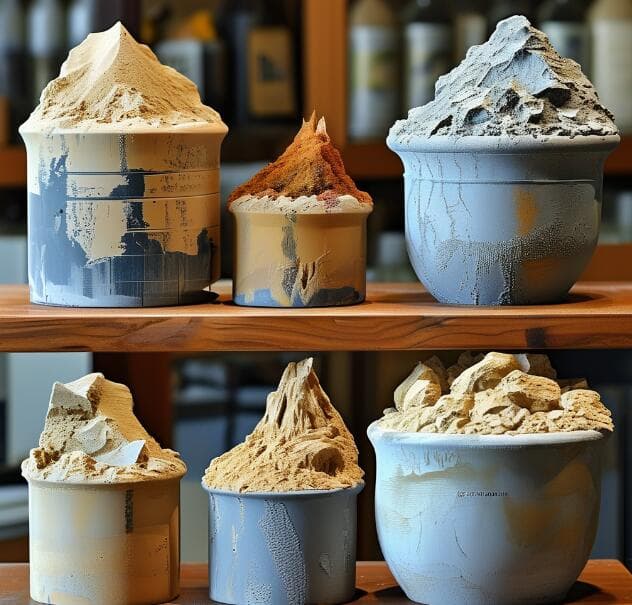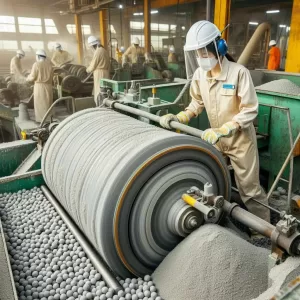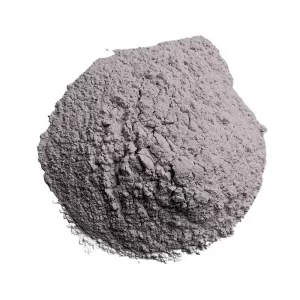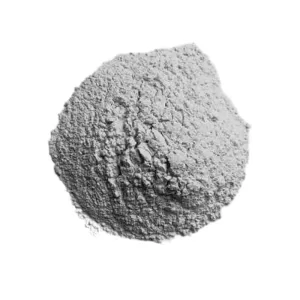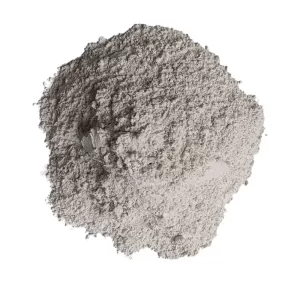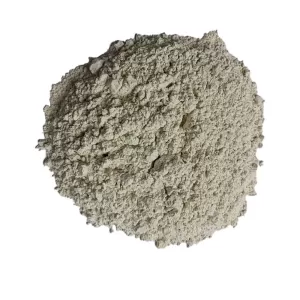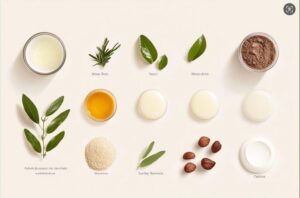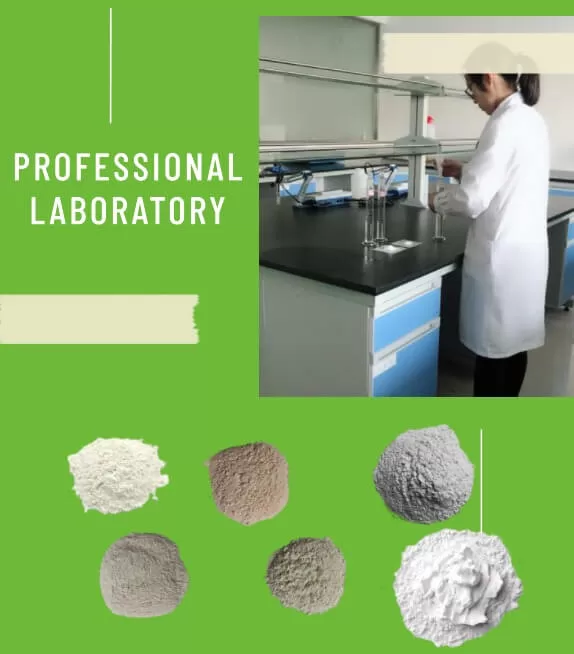Add Your Heading Text Here
Bentonite’s absorbency of blue dye refers to its capacity to adsorb methylene blue when dispersed in an aqueous solution. The amount of methylene blue adsorbed is known as the absorbency of blue dye. The higher the montmorillonite content in the bentonite, the greater the amount of methylene blue it can adsorb.
The main component of bentonite is montmorillonite, which means the quantity of montmorillonite represents the level of the effective component in the bentonite. Therefore, the amount of methylene blue adsorbed by bentonite is used to indirectly determine the montmorillonite content. The presence of montmorillonite makes the absorbency of blue dye particularly significant. Moreover, the absorbency of blue dye is directly related to the mud-making properties, mud properties, and mesh size of bentonite. Thus, the absorbency of blue dye can be considered a primary technical indicator for evaluating the relative content of montmorillonite in bentonite.
Determination Method and Principle of Bentonite’s Absorbency of Blue Dye
Methylene blue forms a monovalent organic cation in an aqueous solution, which can undergo a cation exchange reaction with bentonite to form an organic bentonite complex.
- Prepare a methylene blue standard solution [0.2%, weigh 2.3530g of trihydrate methylene blue and place it in a 250mL beaker, add distilled water to dissolve completely (if methylene blue is not easily soluble, it can be slightly heated to dissolve, but the temperature should not be too high), transfer to a 1000mL volumetric flask, dilute with water to the mark, shake well, and let it sit for 1-2 days before use].
- Sodium pyrophosphate solution (1%).
Weigh 0.2000g of the sample and place it in a conical flask containing 50mL of distilled water, shake to disperse the sample fully in water. Add 20mL of 1% sodium pyrophosphate solution, shake well, heat on a hot plate (slightly warm) for 5 minutes, and cool to room temperature naturally. Titrate with 0.2% methylene blue standard solution, starting with 5mL increments, gradually reducing the interval to 2-3mL, and when nearing the endpoint, add 0.5-1mL each time. After each addition, shake for 15-20 seconds, dip a glass rod with a diameter of 2.5-3mm into the test liquid and place a drop on medium-speed quantitative filter paper to observe whether there is a light green halo around the central dark blue spot. If there is no halo, continue to add. When a light green halo just appears around the dark blue spot, shake for another 30 seconds, dip the glass rod into the test liquid and place a drop on the filter paper; if the light green halo does not disappear, this is the endpoint of titration, record the volume of methylene blue consumed V (mL).
Why Does Montmorillonite Have the Ability to Absorb Methylene Blue?
This is due to the cation exchange capacity on the surface, in the pores, and between the layers of montmorillonite mineral particles, which leads to the absorbency of blue dye. The reason why the absorbency of blue dye cannot accurately represent the montmorillonite content in bentonite from different geological areas and strata is that the cation exchange capacity of montmorillonite in these different areas and strata varies.
If it is within the same geological area and the same stratum, and further assuming that the cation exchange capacity of the montmorillonite contained is the same, then the absorbency of blue dye can more accurately represent the content of montmorillonite in bentonite. In any case, the absorbency of blue dye can accurately test the cation exchange capacity.
The Relationship Between Bentonite’s Absorbency of Blue Dye and the Wet Compressive Strength of Molding Sand
Wet compressive strength: Bentonite binder, molding sand for casting, and mixing water are mixed in a certain ratio in a sand mixer, and after mixing for a certain time, the appropriate compaction rate is determined. The mixed sand is made into a standard specimen on a specimen machine and tested on a wet compressive strength tester. The pressure required for the specimen containing mixing water to break is the wet compressive strength of the specimen. Depending on the type of casting alloy, the size of the casting, the sand compaction method, the molding method, and the surface drying conditions, different requirements are put forward for the performance of the molding sand, and therefore, the requirements for the wet compressive strength of the molding sand are also different.
The absorbency of blue dye of bentonite is generally directly proportional to the wet compressive strength of the molding sand. Bentonite with high absorbency of blue dye used as a binder for molding sand also has good wet compressive strength. If the absorbency of blue dye is low, the wet compressive strength of the molding sand is also less, and even with the same absorbency of blue dye, the wet compressive strength of bentonite is not completely the same, which is related to the composition and properties of the bentonite. Through the above relationship, when we produce high wet compressive strength bentonite products, we should first choose bentonite with high absorbency of blue dye. If there is no high absorbency of blue dye bentonite, we should purify low-grade bentonite to meet the needs of production.
Different Industries Have Different Requirements for High-Quality Bentonite Absorbency of Blue Dye and Other Indicators:
- Sodium-based Casting Bentonite In automatic molding production of molding sand, sodium-based casting bentonite must be used. The purpose of using bentonite in this industry is as a binder for molding. Therefore, the requirements are high viscosity, high strength, and parameters often involved include absorbency of blue dye, wet compressive strength, hot wet tensile strength, reusability, moisture, and particle size, etc. The best parameters for sodium-based casting bentonite in the industry are as follows:
| Absorbency of Blue Dye | Wet Compressive Strength | Hot Wet Tensile Strength | Reusability | Moisture | Particle Size |
|---|---|---|---|---|---|
| >37 | >120 | >3.5 | >60% | <12% | 200 mesh D98 |
- Sodium-based Drilling Mud Bentonite In drilling, sodium-based bentonite is used, and what is valued is viscosity, filtration volume, and high-temperature resistance. Many manufacturers produce mud with high viscosity, but most of the viscosity values are obtained by adding thickeners. This type of mud works well in horizontal drilling and pile construction. However, if used in drilling, as the depth increases, the temperature of the drill bit will gradually rise, and when the temperature exceeds 150°C, this type of mud will have a significantly increased filtration volume. Therefore, it is not suitable for drilling operations. So what should the best sodium-based drilling mud bentonite look like? First, the quality of the raw ore selected for production should be high, and only the viscosity of the finished product reflects the viscosity of the bentonite itself, which is the best sodium-based drilling mud bentonite. Therefore, the best parameters for sodium-based drilling mud bentonite are as follows:
| 600r/min Viscometer Reading | Filtration Volume | Yield Value/Plastic Viscosity | Particle Size |
|---|---|---|---|
| >35 | <11 | <1.3 | 200 mesh D98 |
- Sodium-based Metallurgical Pellet Bentonite In the production of metallurgical pellets, sodium-based bentonite is used, and the requirements for its binding strength are high. Some of the parameters often involved include absorbency of blue dye, gel value, expansion capacity, water absorption rate, moisture, and fineness, etc. It is unrealistic to specify the exact parameters for the best metallurgical pellet sodium-based bentonite. It can only be said what the parameters of the first-class product should have. Because each الشركة المصنعة للبنتونيت‘s situation is different, it is difficult to compare what is the best. In addition, the market price must also be considered. If one blindly pursues the best and ignores the price, then there is no significance. Therefore, the parameters for first-class sodium-based metallurgical pellet bentonite are listed as follows:
| Absorbency of Blue Dye (g/100g) | Gel Value | Expansion Capacity | Water Absorption Rate | Moisture | Particle Size |
|---|---|---|---|---|---|
| >30 | >650 | >70 | >560 | <10 | 200 mesh D98 |
In addition to the absorbency of blue dye, there are many other items that can be tested for bentonite, such as component detection, content detection, quality detection, moisture content detection, porosity detection, mud-making property detection, bulk density detection, specific gravity detection, water absorption rate detection, expansion property detection, elastic modulus detection, expansion stress detection, particle size detection, compressive strength detection, tensile strength detection, Mohs hardness detection, saturation water absorption rate detection, shear strength detection, and Proctor hardness detection, etc.
A high absorbency of blue dye in bentonite does not necessarily mean it is a good bentonite, but a good bentonite must have a high absorbency of blue dye indicator. Note: When specifying the المونتموريلونيت content, it is essential to indicate the method of measurement, as the content measured by different methods may not be precisely comparable.

